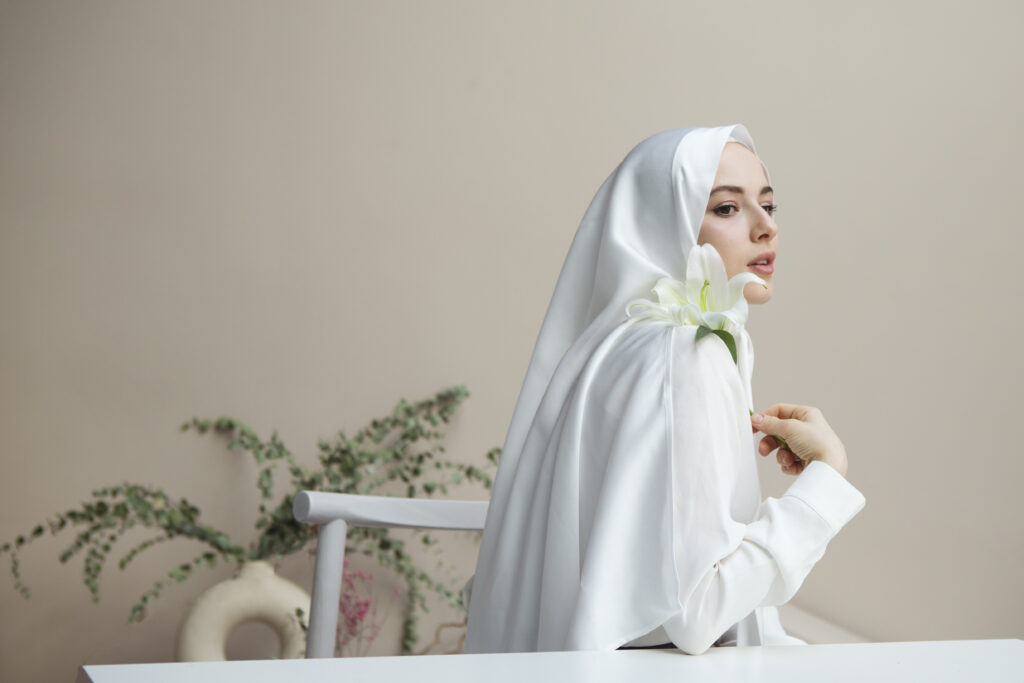Hijabhoojup: Exploring the Intersection of Tradition and Modernity

Dive deep into the concept of "Hijabhoojup," a unique blend of cultural tradition and modern identity. Explore its origins, symbols, and significance.
What is “Hijabhoojup”?
The term Hijabhoojup is a fascinating and complex concept that blends elements of tradition, culture, and modernity. Although it might not be a widely recognized word in mainstream discourse, “Hijabhoojup” symbolizes a unique fusion of ideas, representing a nuanced perspective on cultural identity and personal expression. But what exactly does it mean, and where does it come from? Let’s explore.
The Origin of the Term
“Hijabhoojup” appears to be a hybrid term, possibly rooted in cultural and linguistic intersections. “Hijab,” a term widely known for its religious and cultural significance, primarily refers to the modest covering worn by many Muslim women. “Hoo” and “Jup,” on the other hand, are more abstract components, each carrying its own cultural or spiritual weight. Together, they form a concept that is both symbolic and deeply personal.
Significance of the Concept in Modern Culture
In a world where cultural identities are increasingly fluid and hybridized, “Hijabhoojup” can be seen as a representation of this complexity. It embodies the intersection of tradition and modernity, where cultural practices are reinterpreted and reshaped to fit contemporary narratives. This term might resonate particularly in societies where cultural integration and the preservation of heritage are ongoing discussions.
The Cultural and Religious Context of Hijab
Historical Background of the Hijab
The hijab, as we know it today, has a long and varied history. It is traditionally associated with Islamic culture, where it serves as a symbol of modesty, privacy, and morality. However, the concept of veiling or covering is not unique to Islam and can be found in many other cultures and religions throughout history. The hijab’s significance has evolved over time, influenced by socio-political contexts and changing cultural norms.
Hijab in Different Cultures
While the hijab is most commonly associated with Muslim women, similar practices of veiling or covering can be found in various cultures. In some societies, head coverings are worn for reasons of modesty, respect, or religious devotion. For instance, in Christian traditions, nuns wear veils as a sign of their commitment to their faith. In certain African and Middle Eastern cultures, headscarves are part of traditional attire, reflecting cultural heritage rather than religious mandate.
Religious Interpretations of the Hijab
The hijab’s religious significance is profound within Islamic teachings. It is considered a commandment from Allah, intended to promote modesty and piety. However, interpretations of the hijab vary widely among different Islamic scholars and communities. Some view it as obligatory, while others see it as a personal choice that reflects one’s relationship with God. This diversity of thought has led to different practices and attitudes toward the hijab within the global Muslim community.
“Hoo” in “Hijabhoojup”
Understanding “Hoo” in Cultural Terms
The term “Hoo” within “Hijabhoojup” may carry cultural or spiritual connotations. While its exact origin is unclear, “Hoo” could be interpreted as a sound or a word that has significant meaning in specific cultural or spiritual contexts. It might represent a call, a chant, or even a state of being, resonating with deeper spiritual or emotional experiences.
The Spiritual Meaning Behind “Hoo”
In some spiritual traditions, sounds like “Hoo” are used in chants or meditations to invoke certain energies or states of consciousness. These sounds are believed to have vibrational qualities that can influence the mind and spirit. In the context of “Hijabhoojup,” “Hoo” might symbolize a connection to these spiritual practices, adding a layer of depth to the term’s meaning.
“Jup” in “Hijabhoojup”
The Concept of “Jup” in Tradition
“Jup” is another intriguing component of “Hijabhoojup.” It might be derived from traditional practices or languages, representing an idea, action, or state of being. The exact meaning of “Jup” can vary depending on cultural interpretations, but it could be associated with movement, rhythm, or even joy. In some traditions, words like “Jup” are used in storytelling or rituals to convey specific emotions or actions.
How “Jup” Relates to Modern Ideologies
In modern contexts, “Jup” might be interpreted as a symbol of resistance or empowerment. It could represent the act of breaking free from traditional constraints or the celebration of cultural identity in a globalized world. “Jup” might also be seen as a metaphor for the dynamic nature of culture, constantly evolving and adapting to new influences.
Symbolism and Metaphorical Interpretation
The Symbolism of Hijabhoojup
“Hijabhoojup” as a whole can be seen as a symbol of cultural fusion and the blending of tradition with modernity. The hijab, traditionally a symbol of modesty, when combined with the abstract elements of “Hoo” and “Jup,” creates a new concept that reflects the complexity of identity in the contemporary world. It symbolizes the idea that cultural practices are not static but are constantly being reinterpreted and reshaped.
Metaphors Associated with Hijabhoojup
In literature and art, “Hijabhoojup” might be used as a metaphor for the struggle between tradition and innovation. It could represent the tension between adhering to cultural norms and embracing new ways of thinking. Alternatively, it might symbolize harmony, where different elements come together to create something unique and meaningful.
How Hijabhoojup is Used in Literature and Art
Artists and writers might use “Hijabhoojup” as a theme to explore issues of identity, cultural heritage, and the challenges of living in a multicultural world. Through this concept, they can express the complexities of navigating between different cultural expectations and the desire for self-expression. “Hijabhoojup” could be depicted in various forms, from visual art to poetry, each interpretation adding to its rich tapestry of meaning.
The Evolution of Hijabhoojup Over Time
Early Uses of the Term
The origins of “Hijabhoojup” may be rooted in specific cultural or linguistic traditions, with its usage evolving over time. Initially, it might have been used in a more limited context, perhaps within specific communities or artistic circles. As the concept gained traction, it began to be interpreted in broader ways, reflecting changing social and cultural dynamics.
Hijabhoojup in Contemporary Society
Today, “Hijabhoojup” could be seen as a symbol of cultural hybridity, where traditional practices are reimagined in modern contexts. It might resonate with younger generations who are exploring their identities in a globalized world, where cultural boundaries are increasingly blurred. In this sense, “Hijabhoojup” represents both continuity and change, honoring the past while embracing the future.
Common Misconceptions
Debunking Myths About Hijabhoojup
As with many complex concepts, “Hijabhoojup” might be misunderstood or misinterpreted. Some might see it as a rejection of tradition, while others might view it as a purely modern invention with no real connection to cultural heritage. However, “Hijabhoojup” is neither a rejection nor a simple innovation; it is a synthesis, blending the old with the new in a way that is meaningful and relevant.
The Role of Media in Shaping Perceptions
Media plays a significant role in how concepts like “Hijabhoojup” are perceived. Through various platforms, the term can be popularized, misrepresented, or even co-opted. It’s important to approach media representations critically, understanding that they often reflect broader social and cultural biases. By engaging with “Hijabhoojup” thoughtfully, we can appreciate its depth and significance.
Hijabhoojup in the Digital Age
The Impact of Social Media
In the digital age, social media has become a powerful tool for shaping cultural narratives. “Hijabhoojup” could gain traction online, with communities forming around the concept to discuss, reinterpret, and share their experiences. Social media platforms allow for a more democratic exchange of ideas, where individuals can contribute to the evolving meaning of “Hijabhoojup.”
Online Communities and Their Influence
Online communities have the potential to influence how “Hijabhoojup” is understood and practiced. Through forums, blogs, and social media groups, people can share their interpretations, experiences, and creative expressions related to the concept. These communities can foster a sense of belonging and identity, helping to keep the concept alive and relevant in the digital era.
The Future of Hijabhoojup
Predictions and Trends
As cultural practices continue to evolve, so too will the concept of “Hijabhoojup.” It might become more widely recognized, perhaps even entering mainstream discourse as a symbol of cultural fusion. Alternatively, it could remain a niche concept, valued for its depth and complexity by those who appreciate its unique blend of tradition and modernity.
How Hijabhoojup Might Evolve
The evolution of “Hijabhoojup” will likely be influenced by broader social and cultural trends. As global connectivity increases, cultural practices will continue to intersect and blend, creating new forms of expression. “Hijabhoojup” might evolve to encompass even more diverse elements, reflecting the ever-changing landscape of cultural identity.
Conclusion
Recap of Key Points
“Hijabhoojup” is a rich and multifaceted concept that embodies the intersection of tradition and modernity. It reflects the complexities of cultural identity in a globalized world, where traditional practices are constantly being reinterpreted and reshaped. Through its various components—”Hijab,” “Hoo,” and “Jup”—the term represents a unique fusion of ideas, symbolizing both continuity and change.
Final Thoughts on Hijabhoojup
As we move forward in an increasingly interconnected world, concepts like “Hijabhoojup” will continue to play a crucial role in how we understand and navigate our cultural identities. By embracing the fluidity and complexity of these concepts, we can foster a deeper appreciation for the rich tapestry of human experience.
FAQs
What does “Hijabhoojup” mean?
“Hijabhoojup” is a complex term that combines elements of tradition and modernity, symbolizing the intersection of cultural identity and personal expression. It is not a widely recognized term but represents a unique perspective on cultural fusion.
Is Hijabhoojup a widely recognized term?
No, “Hijabhoojup” is not a widely recognized term. It appears to be a hybrid concept that blends various cultural and spiritual elements, representing a nuanced understanding of identity.
How does Hijabhoojup relate to traditional hijab?
“Hijabhoojup” incorporates the traditional concept of the hijab, but it also includes additional elements (“Hoo” and “Jup”) that add layers of meaning related to cultural and spiritual identity.
Can Hijabhoojup be interpreted differently across cultures?
Yes, the interpretation of “Hijabhoojup” can vary across cultures. It is a flexible concept that reflects the diversity of cultural practices and the ways in which they are reinterpreted in modern contexts.
What role does Hijabhoojup play in modern discourse?
“Hijabhoojup” represents the blending of tradition and modernity, making it relevant in discussions about cultural identity, globalization, and the evolution of cultural practices in the digital age.



